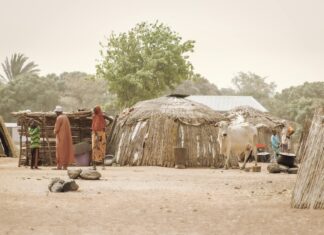By Gbadamosi oladimeji
Like a man surviving on oxygen, the world grapples with the dreaded coronavirus. Nigeria isn’t isolated. Seven deaths and more than 300 cases sent Africa’s biggest economy to life support. Relegated to the periphery, however, is an even deadlier menace; Lassa fever.
Lassa fever is a severe viral hemorrhagic fever (VHF) like Ebola and Marburg that occurs throughout the year in Nigeria and was declared an “active outbreak” by the Nigeria Centre for Disease Control (NCDC) five weeks into 2020. The epidemic which occurs during the annual dry season (roughly November through March) has spread across half the country.
The fever virus is transmitted to humans through contact with food or household items contaminated with urine and feces of a rat. It’s also known to spread from person-to-person through contact with the body fluids and organs of infected persons, which has resulted in healthcare workers easily getting infected; some have died.
The epidemic, whose rapid escalation started right from the second week of the year, had by the end of the ninth week seen 774 cases and 132 deaths spread across 26 of Nigeria’s 36 states and the federal capital territory.
Lassa fever is known to have a high mortality rate with Case Fatality Ratio (CFR) as high as 23% recorded for the first quarter of 2019—far deadlier than the Covid-19 coronavirus which currently has an estimated CFR of 2%.
Still Lassa fever has received far less attention, awareness and media coverage, even worst since COVID-19 entered the shores.
The Nigeria Center for Disease Control(NCDC) on Saturday cautioned Nigerians to maintain clean hygiene at all times as a way of responding to outbreak of Lassa fever, admist coronavirus in the country.
“Hygiene is key in the prevention of Lassa fever. Please keep your environment clean at all times to avoid attracting rats”, said NCDC.
According to World Health Organization(WHO) recent reports, from 1st January through 9th February 2020, 472 laboratory confirmed cases including 70 deaths (case fatality ratio= 14.8%) have been reported in 26 out of 36 Nigerian states and the Federal Capital Territory.
However from the 472 confirmed cases, 75% have been reported from three states: Edo (167 cases), Ondo (156 cases) and Ebonyi (30 cases). Fifteen confirmed cases have been reported among health care workers with one death among a confirmed case and one among a probable case.
Given that 90-95% of human infections are due to indirect exposure to (through food or household items contaminated by infected rats’ urine and faeces) or direct contact with infected Mastomys rats, the very high density and high circulation of Lassa fever virus in young non-immune rat population during the wet season create a potential for further human infection, thus, the number of infections is expected to continue to rise until the end of the dry season.
To that effect, the NCDC has activated a National Emergency Operations Centre (EOC) with an inter-disciplinary, multi-partner technical team to ensure a well-coordinated response and swift control of Lassa fever outbreaks across affected states.
Confirmed cases are being treated in the designated treatment centers in the affected states following optimized standard of care protocols. Guidelines for appropriate case management and infection prevention and control (IPC) measures have been disseminated to the different states.










